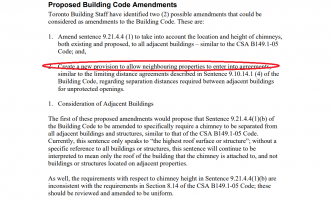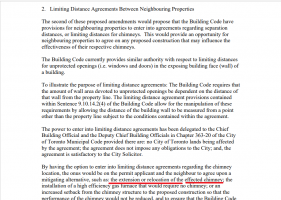Attached is a staff report from City of Toronto regarding chimney. My question is more about the comments in the second screenshot below. How can the owner of a new proposed construction permit enter into an agreement about the neighbor's effected chimney? Who will pay for the extension or relocating of the effected chimney?
As I understand, unless there is proof that shows that the neighbor's effected chimney has been constructed without a permit, the neighbor (if it's me) would not be willing to pay for any cost to bring his / her effected chimney into compliance with current building code.


As I understand, unless there is proof that shows that the neighbor's effected chimney has been constructed without a permit, the neighbor (if it's me) would not be willing to pay for any cost to bring his / her effected chimney into compliance with current building code.



